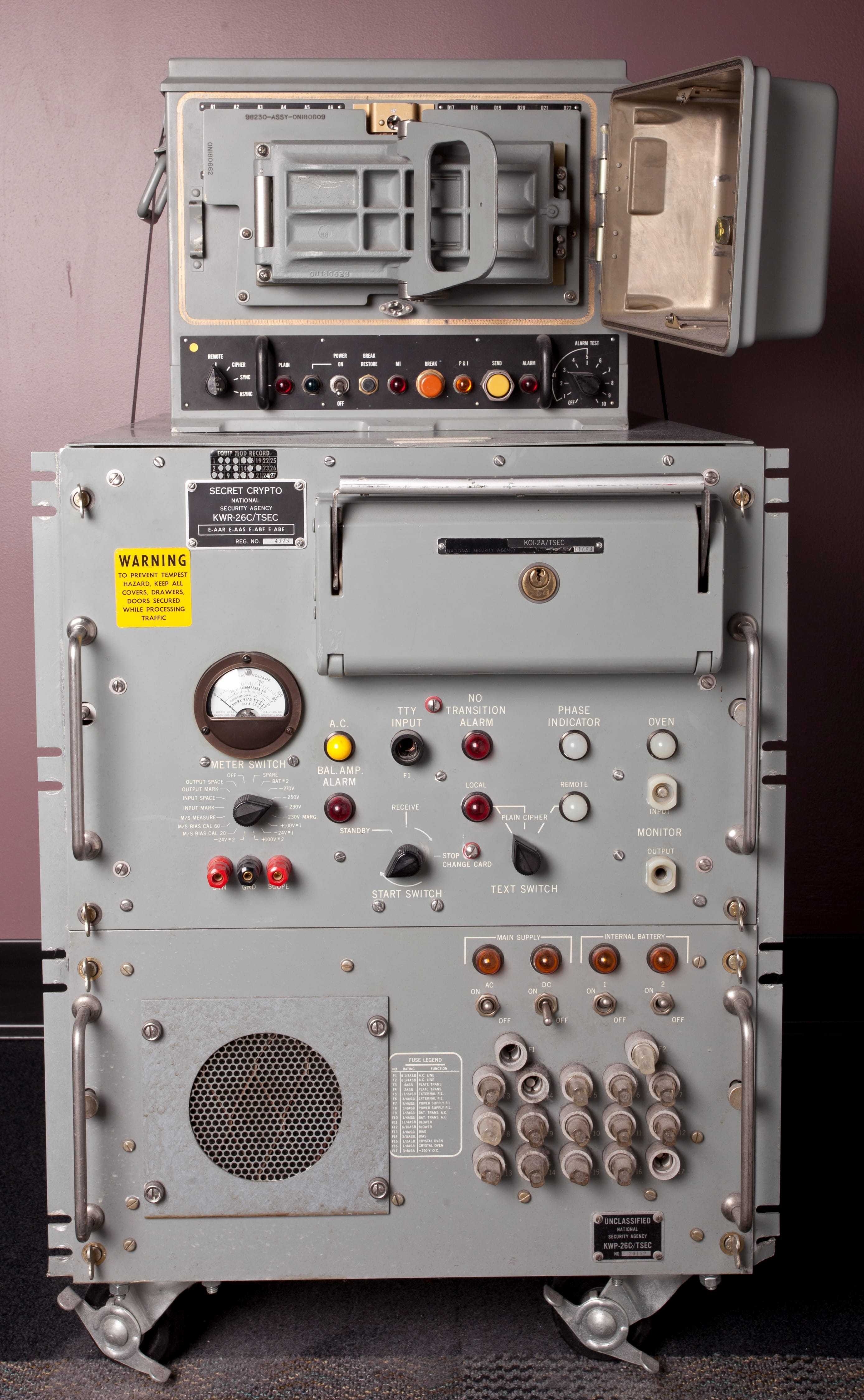Artifact Details

Cryptographic machines created and decoded encrypted messages.
The United States and other NATO countries used these cryptographic communication machines as recently as the mid-1980s. The KW-26 (the larger unit on the bottom) encrypted and decrypted teletype messages between large sites in bulk and at fast rates. Widely used with more than 14,000 units produced, the KW-26 superseded the crypto machines of World War II by using electronic shift registers instead of mechanical rotors. The KW-7 (the smaller unit on top) provided station-to-station communications and featured solid-state circuitry, a rugged housing, and a sealed lid to prevent electro-magnetic emanations. Convicted spy John A. Walker compromised the KW-7 by selling its key cards to the Soviets from 1967 to 1985.
Artifact Specs
KW-7: 38.1 cm x 36.5 cm x 28.5 cm
(L x W x H)
KW-26: 59.7 cm x 43.2 cm x 63.7 cm
(L x W x H)
